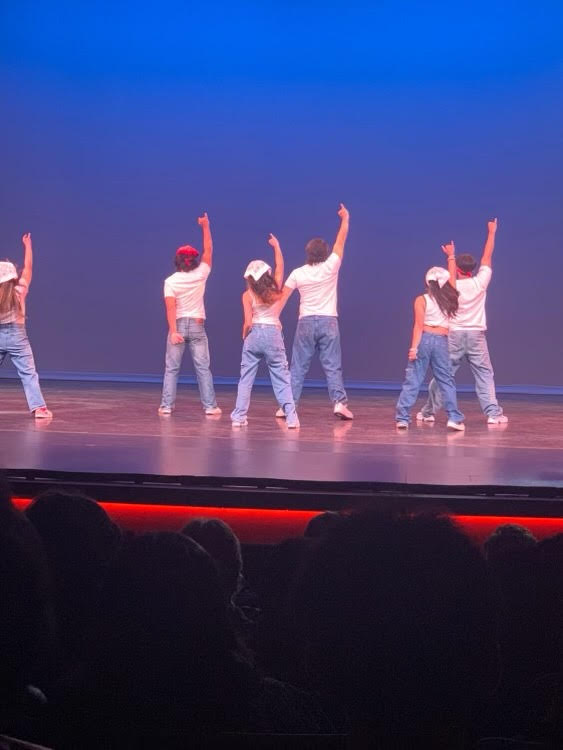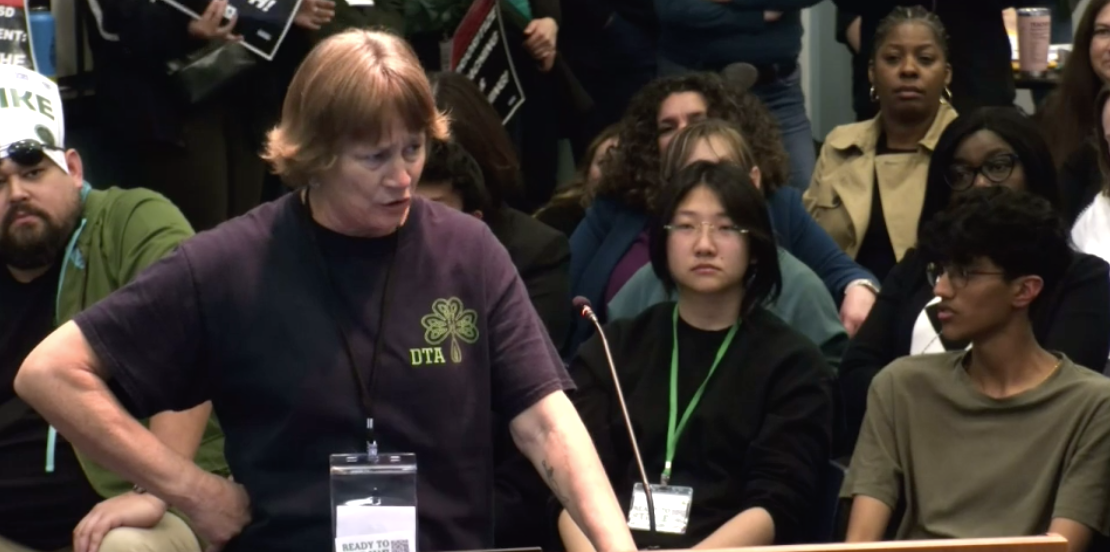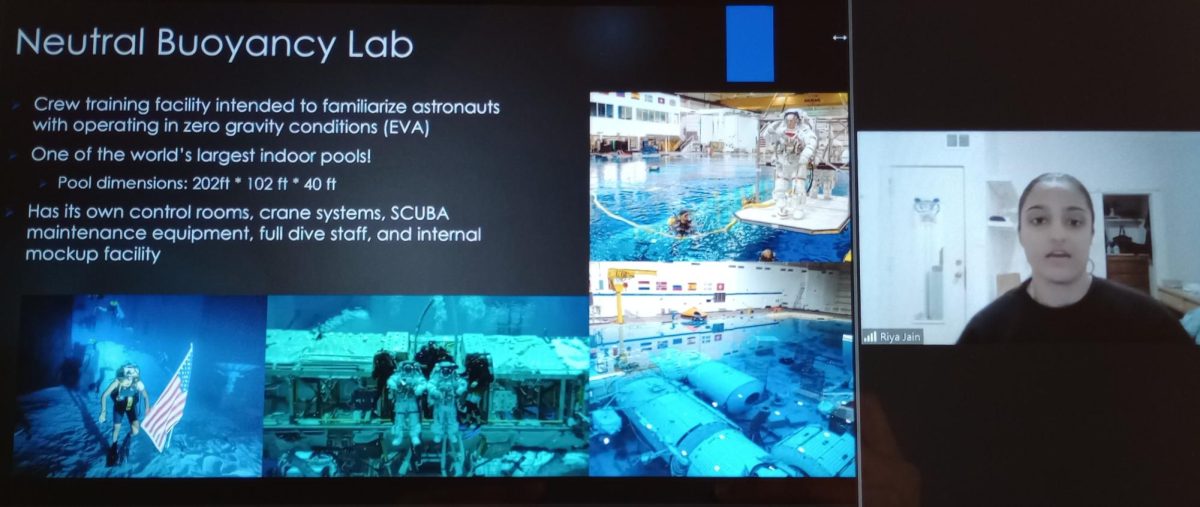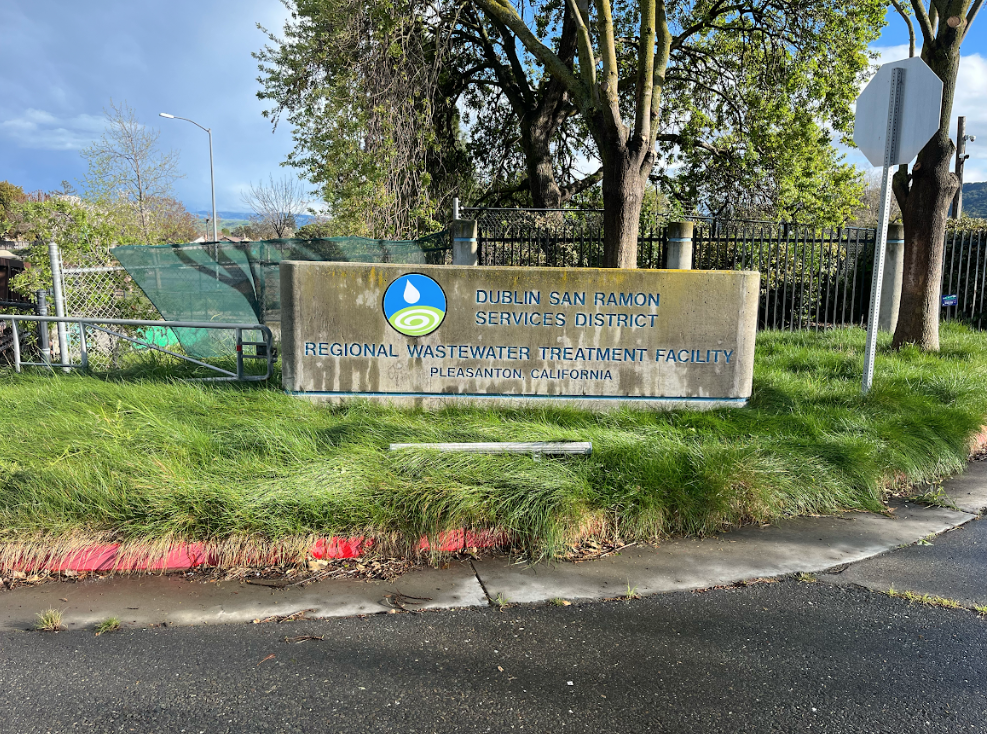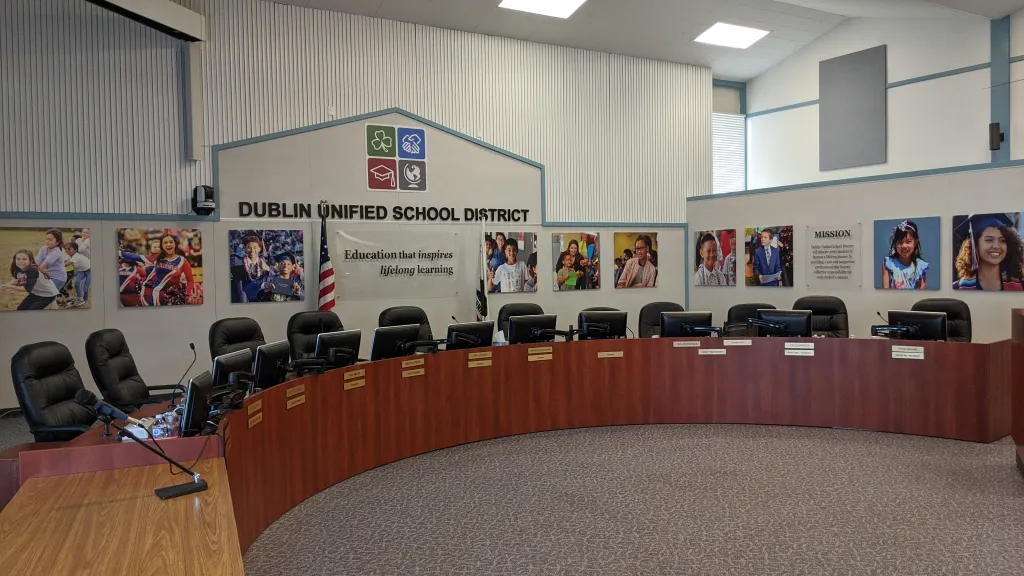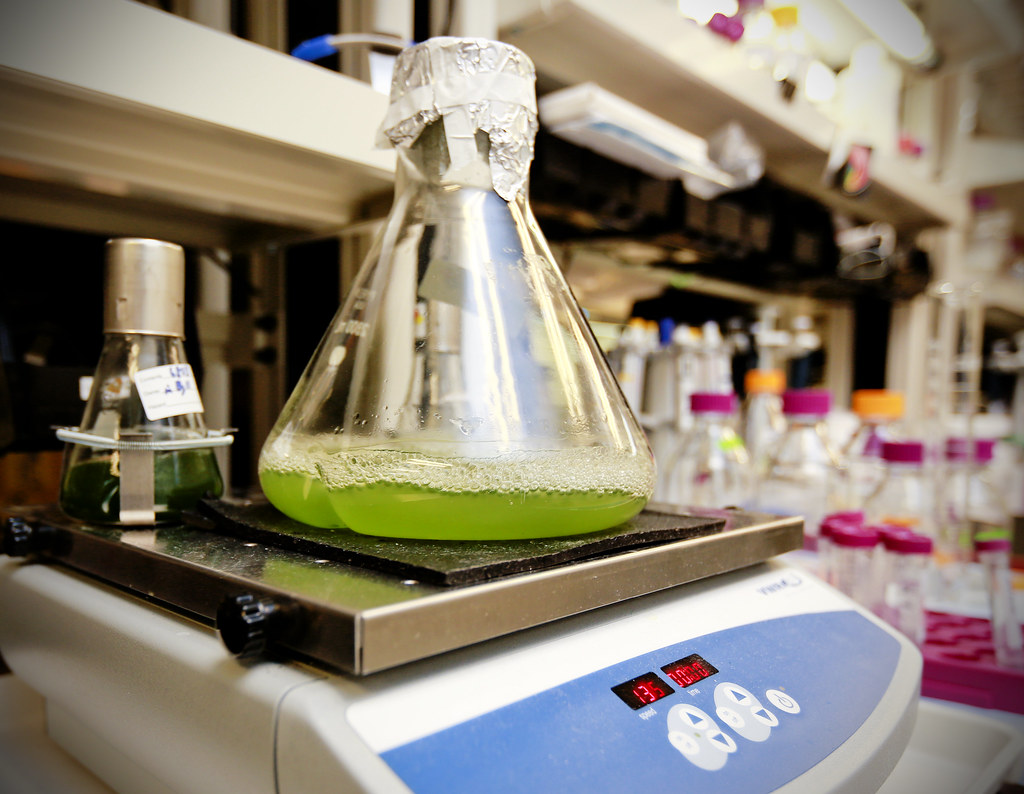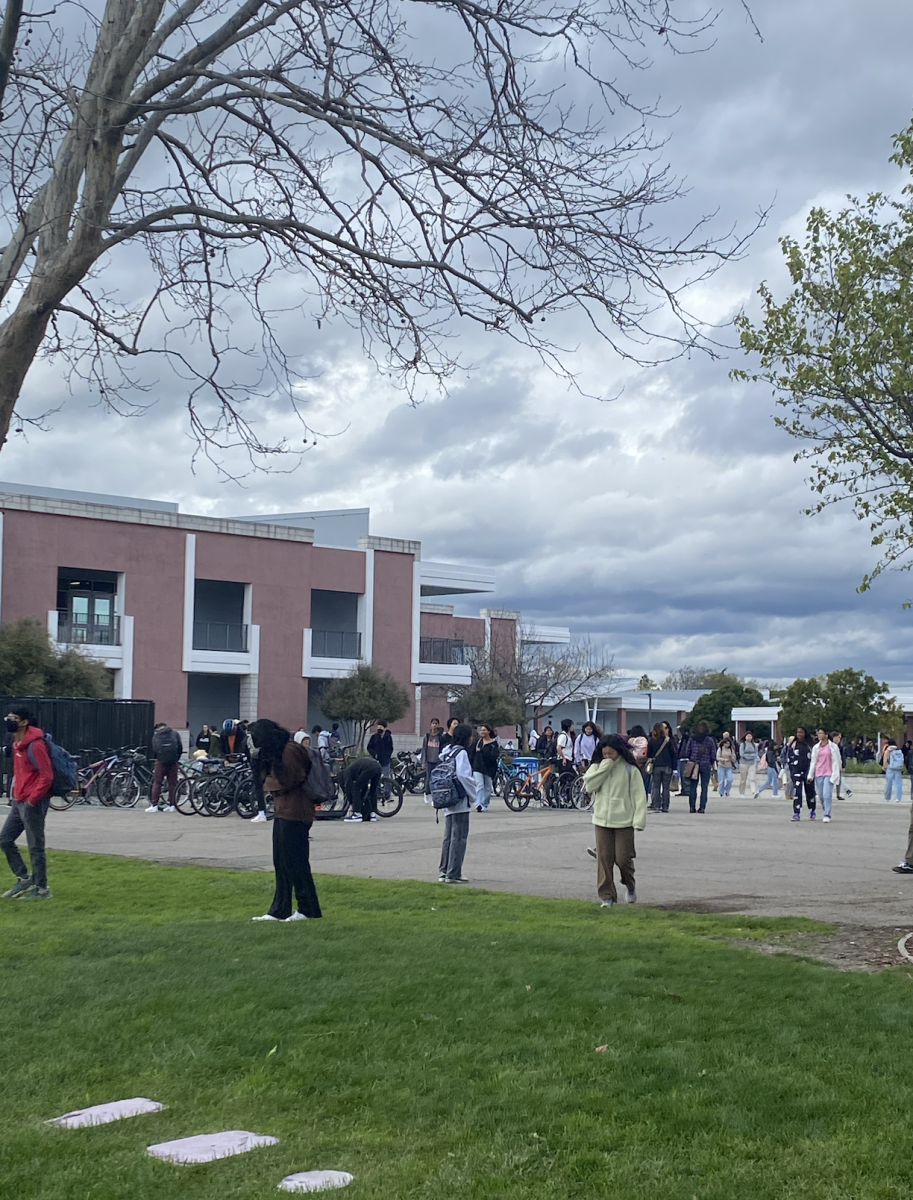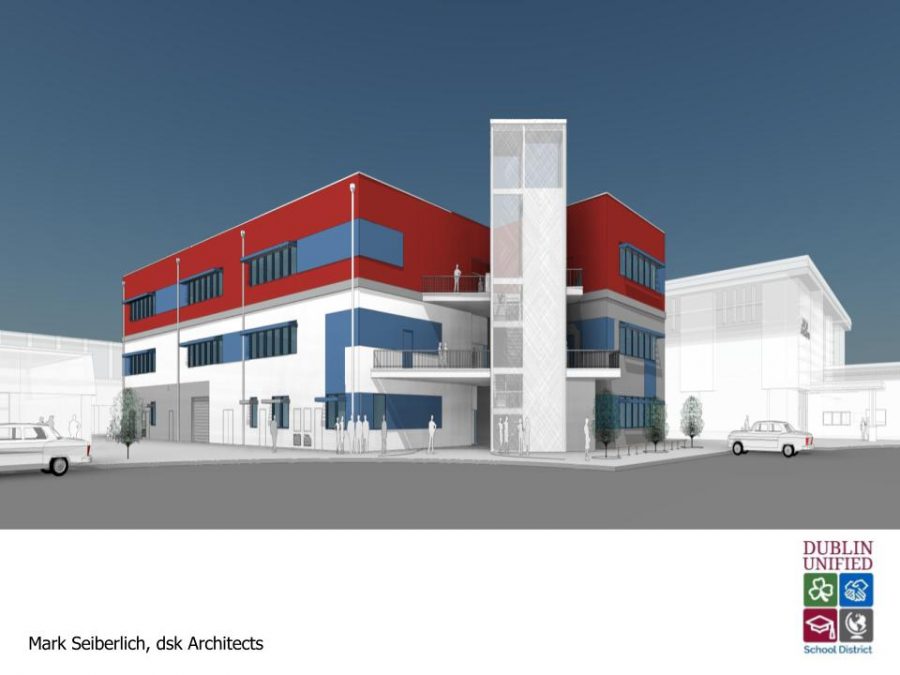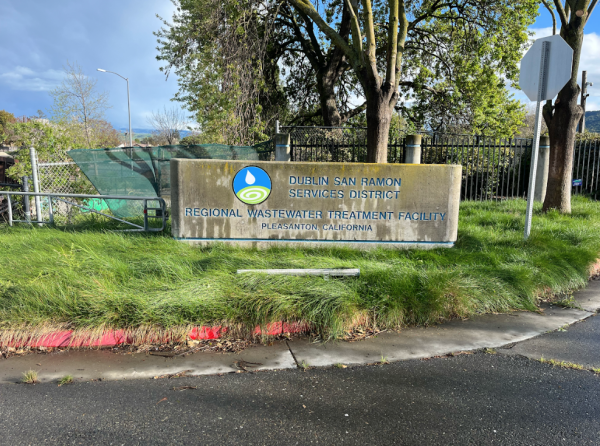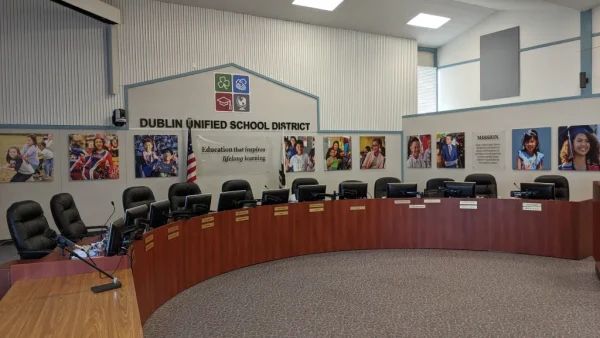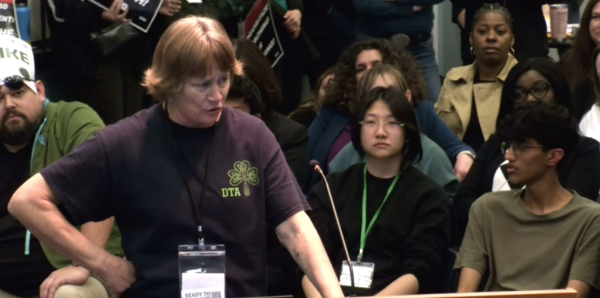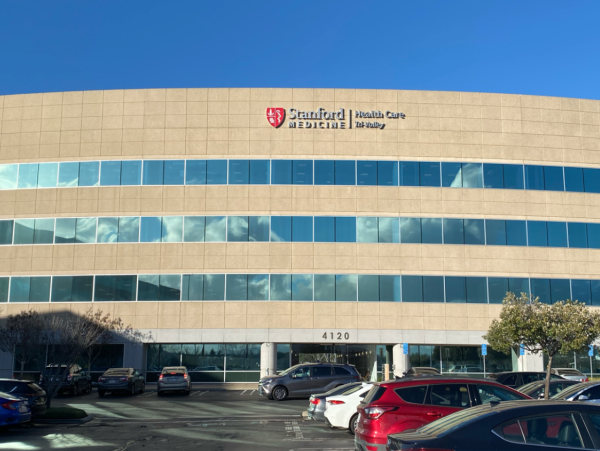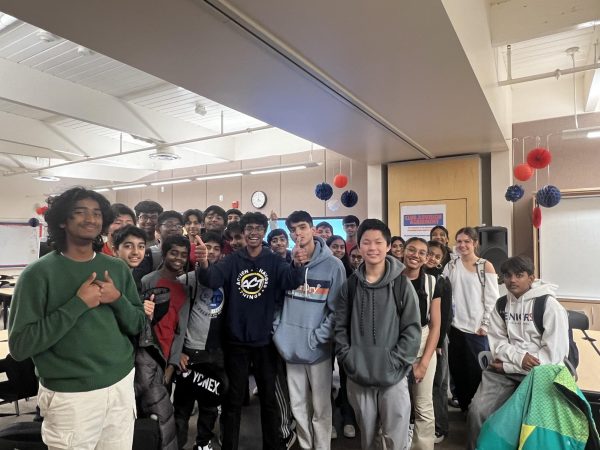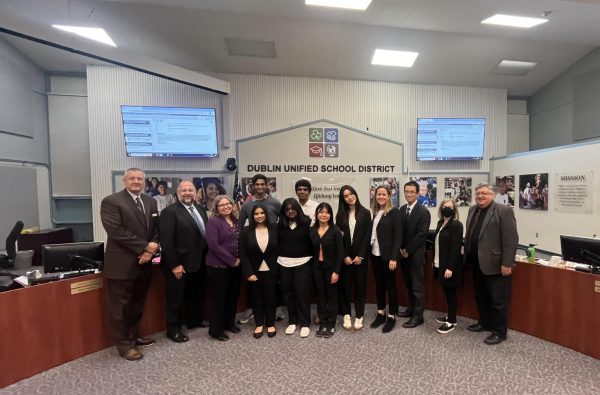The New Engineering and Science Building: Was the School Board’s Decision the Best for DHS?
Image Courtesy of Dublin High School and Mark Seiberlich, dsk Architects
The picture above is the computer model of the three-story design for the Engineering and Science building. Ultimately, the school board opted for a two-story option.
Engineering and Science Building
What’s the issue?
As Dublin’s population continues to expand, one of the most controversial topics has been how DUSD should accommodate the influx of new students. For several years, the focus of the controversy has centered on DHS and the proposed second high school.
The concept of a second Dublin High school was approved last February by the Dublin School Board. At that meeting, the school board decided that the new high school will be built in phases until it can service 2500 students. The first phase of the new high school, which will be open to only 1000 students, is scheduled to be built no earlier than 2021 (to read more about the second high school click here).
However, until the second high school is built, DHS is the only high school in Dublin. And, because the district has not yet even chosen land for the second high school, DHS will remain the only high school in Dublin for at least five years (although some staff and Dublin residents predict that it will take up to ten years). Until the second high school opens sometime in the next decade, all Dublin students will go to DHS.
According to the high school administration, DHS was originally built for 2500 but has been updated to service 2850 students. At the moment, there are 2484 students and it’s estimated that before the second high school is built, DHS will have up to 4000 students. Today, with our current number of students, DHS is already almost maxed out in terms of classroom space. Over the summer, the district is going to put 13 portables on the blacktop and next year they will add 12 more in order to accommodate the influx of students.
This graph shows how DHS’s population will grow in the next five years. (Data: Davis Demographics & Planning, April 2016)Of all of the departments at DHS, one of the most impacted is the science department where there are currently 11 classrooms for 17 teachers. To make do with the lack of classroom space, all but two rooms are shared between at least two teachers. Some rooms are shared by three teachers, and currently, the biotechnology room is shared by four.
Although sharing classrooms is an efficient solution to the space problem, it has negative effects on both students and teachers.
In addition to complicated schedules, science teachers who share classrooms find that they do not have the full use of lab whiteboard, and desk space, nor an office to call their own. In between classes, science teachers work in a converted Special Ed classroom in the science building. Although this room allows teachers to work during their prep periods, it’s not as convenient as having an individual classroom. Furthermore, because teachers are not in the same classroom all day, students have a difficult time finding their science teachers to ask for help.
Sharing classroom affects both students and teachers when it comes to labs. At DHS, many of the advanced science classes do multi-day labs. However, because science classrooms are now split between multiple teachers, the number of multi-day labs each class can do is limited. Due to the hazardous or sensitive nature of the materials and tools involved in these labs, some experiments done in previous years are not even compatible with room sharing.
Students are also affected by the lack of classroom space in another way; except in special circumstances, they cannot take more than one science class a year. For students who plan to pursue a STEM major, this limits how prepared they will be for college. Other students, who may not be sure whether or not they wish to pursue a science career, are left unable to explore their interests. In the coming years, California will be moving to NextGen graduation requirements which requires students to take Biology, Chemistry, and Physics with Earth Science Integrated to fulfill graduation requirements. Without the opportunity to take multiple science classes a year, students will have no room to explore their interests in the sciences.
The same issues that led to the implementation of this policy also limit the size of the Project Lead the Way (PLTW) Engineering and Biomedical Academies at DHS. According to the science teachers in charge of the PLTW academies, both the Engineering and the Biomedical pathways are being forced to limit their cohort sizes due to lack of classroom space. This is a tragedy because both programs have been recognized at state and national levels; this year Mrs. Chou, one of the engineering teachers, was named PLTW Engineering Teacher of the Year and last year two different teams of students belonging to these academies went on to participate in the National Intel Science and Engineering Fair. As the student population continues to oustrip the current classroom space, fewer students will be able to join these Academies, and miss out on all of the opportunities they provide.
What is the solution?
In 2016, Measure H was approved, giving DUSD $256 million to be spent in Dublin schools. This measure was not earmarked for a single specific project, but was rather supposed to be spent on a variety of causes, including updating middle and high school science labs, rebuilding parts of elementary schools, and building new schools altogether.
About $10.5 million of Measure H, around 4% of the total bond, was supposed to be put towards building a three story Engineering and Science (E&S) building at DHS. The rest of the building (about $22 million) would come from other, separate bonds, including Measures C & E.
The three story building was designed to have one floor specifically for engineering classes and two floors of classrooms that would act as extra class space for any department that needed it.
The idea of a separate E&S building has been in the works since 2015 and the three-story design was approved last June. As many supporters of the proposed plan will point out, the E&S building was not a rushed decision, nor was its approval process a secret. Anything and everything built by the district or brought before the school board is public record.
Even teachers and students who are not in the engineering department will be affected by this building because of the extra classroom space it offers. Many normal science classes will be taught in the new building. Athletes are also affected by this building because the new E&S will be on the spot where the EE building now rests and would include a new weight room.
So what happened?
Before the building could be built, the school board had to approve the plans. They were originally scheduled to do this at their meeting on February 14, however several parents that live in East Dublin complained at the meeting that the $10.5 million of Measure H that would be used for the building was “unfair” to students in East Dublin because it took funds away from the second high school.
Because of their complaints, the DUSD school board postponed the decision to their next meeting.
On Tuesday, February 28, the DUSD school board decided to build a two-story E&S building instead of a three story building. With this “compromise”, they eliminated seven classrooms and used less money from Measure H. In the process, the school board seemingly catered to the parents who disrupted the creation of a third story building, a week from its approval (despite the fact that the planning has been on public record for more than a year).
At this meeting, over thirty DHS students and teachers spoke to the board, advocating for the three-story building. Teachers, including Mrs. Sundstrom, Mrs. Kaehms, Mrs. Chou and Mr. Vereen, spoke about how vital the extra classroom space would be. Many of them pointed to how crazy their schedules have become in the past few years as they have started teaching in not one classroom for the whole day, but in up to three or four, switching between periods. Students, mostly from the engineering and biomedical academies, as well as athletes, pointed out that by not building the three story building, the district would continue to limit the amount of students in both academies. Many student speakers, such as junior Neil Bedi, pointed to their younger siblings in the crowd who would benefit from being in the academies, but whose acceptance to them is now uncertain.
Several parents from East Dublin spoke as well. Chief among their arguments was not only the fact that this building would be “stealing” funds away from the second high school, but also that it was “nonsensical” to build this building when another “E&S building will have to be built in East Dublin in several years”.
Their arguments show several major flaws in understanding. To start off with, as it was mentioned above, the $10.5 million that the three-story building would have taken from Measure H was only around 4% of the total bond. Furthermore, this bond, which every single taxpayer in Dublin helped fund, was marketed not only as “funding a second high school” but to update science labs in the middle school, do updates to West Dublin’s aging elementary school and build an Engineering and Science building.
To complicate matters, the “new high school” that the opponents of the three-story building kept referring to will not become a reality for several years. In fact, the district has not even yet bought the land for the second high school. As such, the only students this decision will benefit directly are those who are in grades third, maybe even second, and younger. Until then, all students will go to Dublin High and the E&S building would service all Dublin students, whether they lived a block away from the high school, or on the other side of town.
And, even once the second high school is finished and enrolled, DHS might still need the classroom space a three story E&S building would have provided. As of today, the school board has not determined what DHS’s final capacity will be after the second high school is built. If that figure is above a certain amount, the portables put on campus as interim housing could very well become a permanent solution.
Then there is also the opponents’ argument that “another E&S building will be built in several years” at the new high school. That being said, there is a limit to how much the Engineering or Biomed Academies can grow, regardless of population growth because DHS is a comprehensive high school. A “comprehensive high school” means that DHS is not just a STEM school. It is a school that offers art, drama, world languages, and a host of other electives. To prevent strangling the electives, the funds given to the Engineering and Biomedical Academies are at some point capped to ensure that the district can support a band or language program. The second high school, at the moment, is slated to be a comprehensive high school as well. However, when it is built, the funds between the two schools will be split roughly in half, therefore limiting even further the amounts of funds that would be available to create Engineering and Biomedical Academies at the second high school. It is not yet clear if the second high school will be able to offer the academy experience at all or if it will rather just offer engineering and biomedical electives. Ironically, future high school students slated to attend the second high school may in fact want to go to DHS to have access to the academy experience.
The solution to this problem would be, of course, to accommodate these students via intradistrict transfers and allow them to come to DHS. However, by limiting the size of the E&S building to two stories, DHS’s occupancy will be 180 less than it would have been with a three story building. Accordingly, this would limit the number of intradistrict transfers that could be offered. Because it is educational board policy that no student who lives in a district can be displaced by a student who does not, not all of the would-be transfer students would be able to come to DHS. In other words, by advocating for a smaller E&S building, the opponents of the three story plan may have unintentionally hurt their own children’s interests.
In the future, Dublin students and residents should take care to stay fully informed on the issues affecting DHS. While Dublin’s new population growth does have to be accounted for, the creation of schools on one side of town should not be done at the expense of the current schools.
Your donation will support the student journalists of Dublin High School. Your contribution will allow us to purchase equipment and cover our annual website hosting costs.
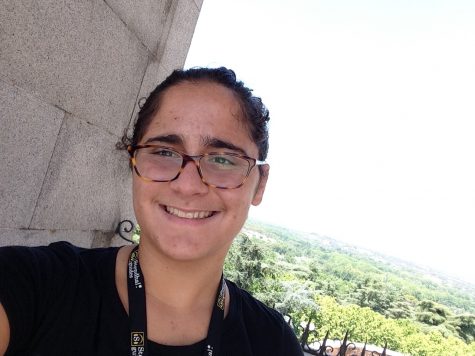
Alexandra Stassinopoulos was a senior at Dublin High School and the 2016-2017 Editor-in-Chief. She joined the Dublin Shield as a sophomore and worked as...

